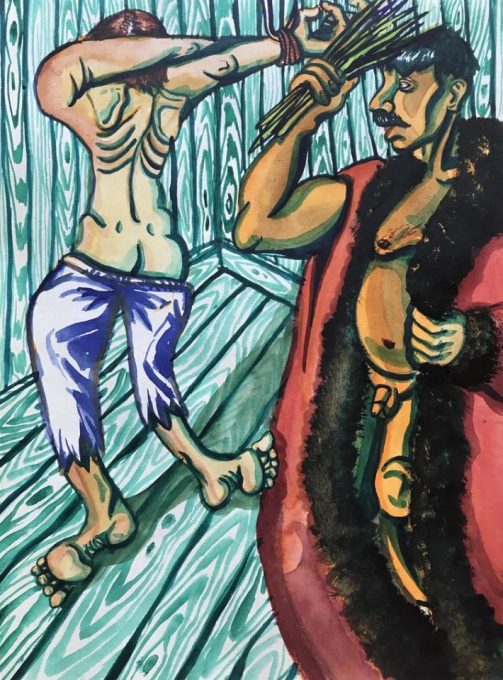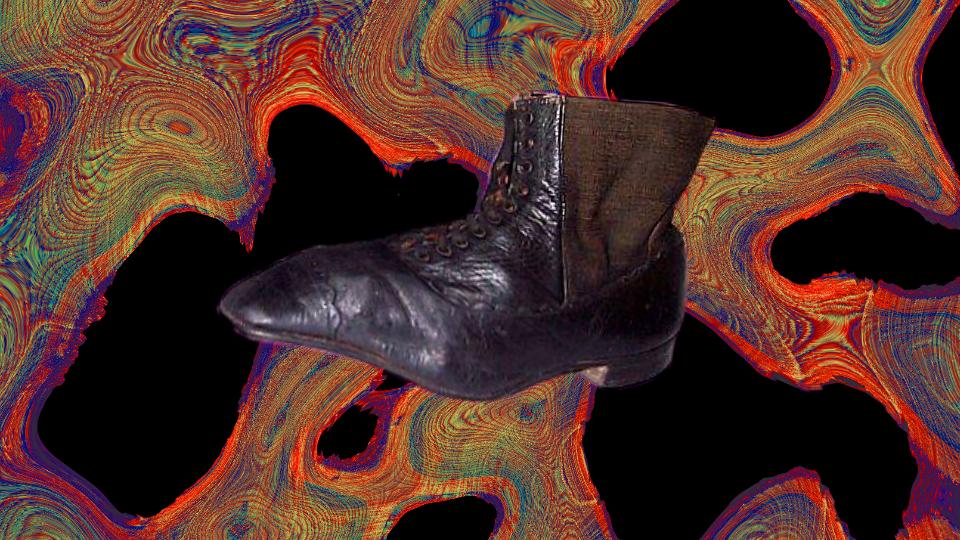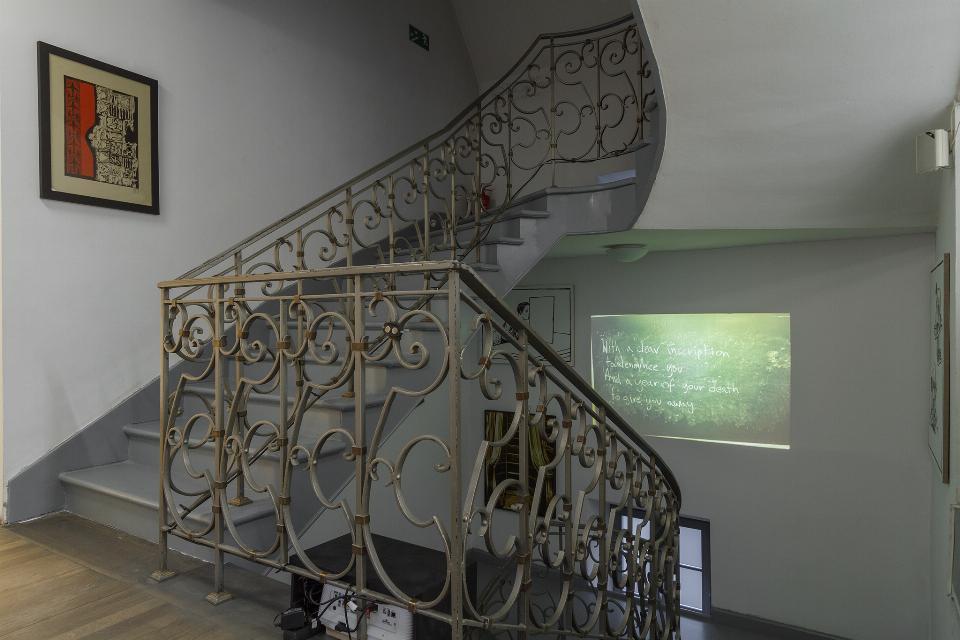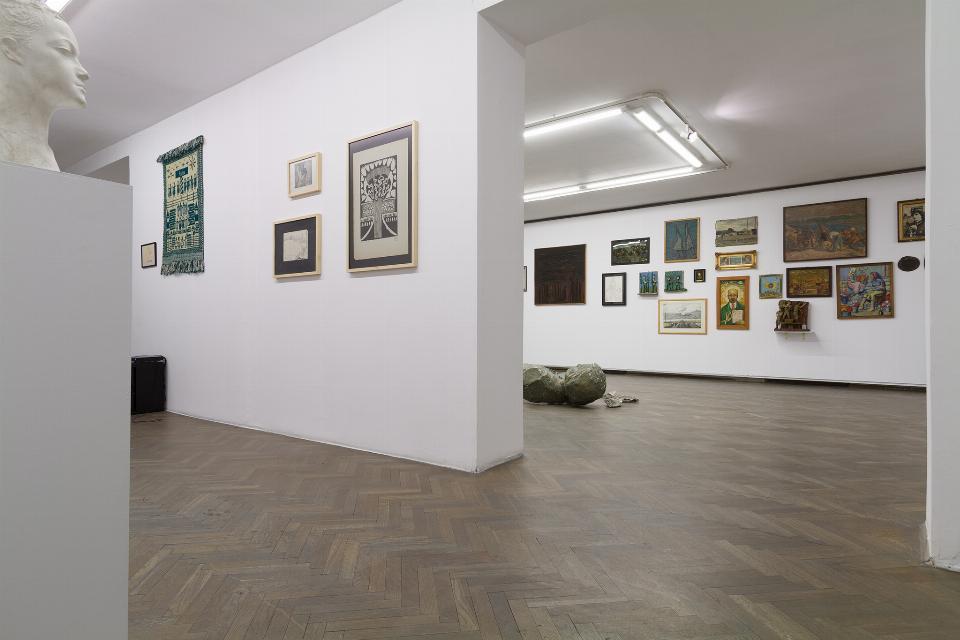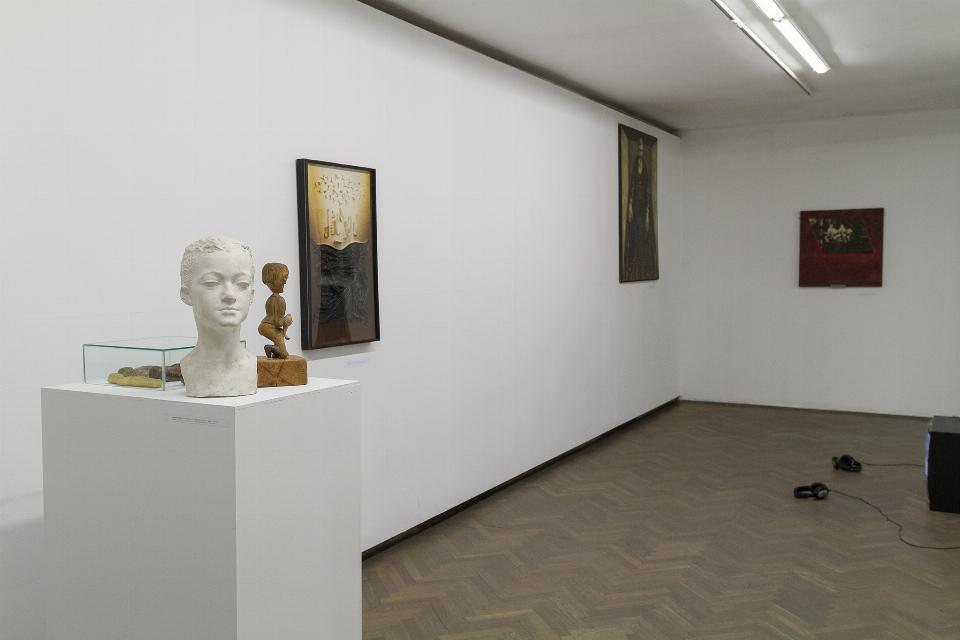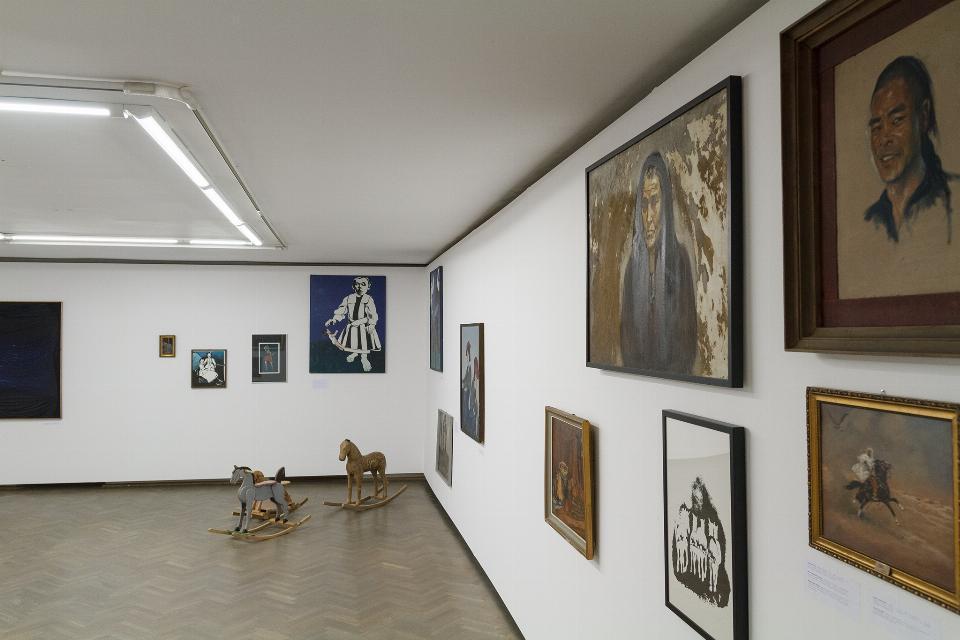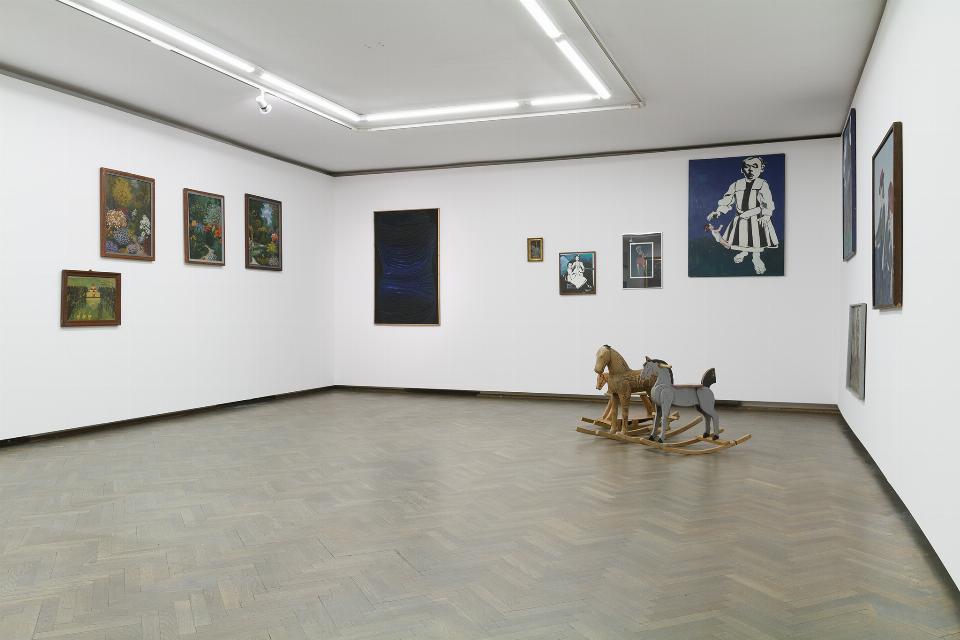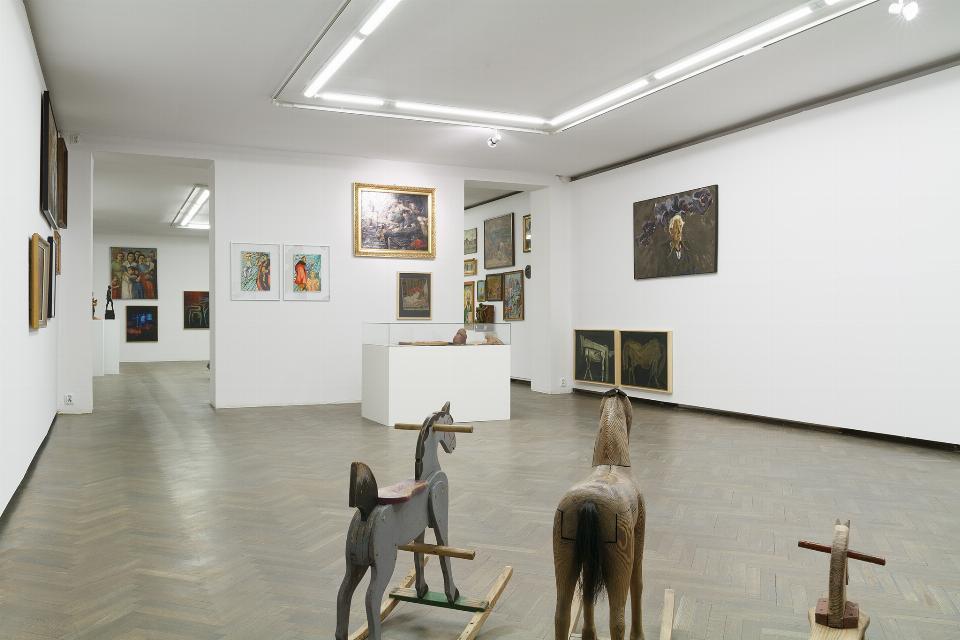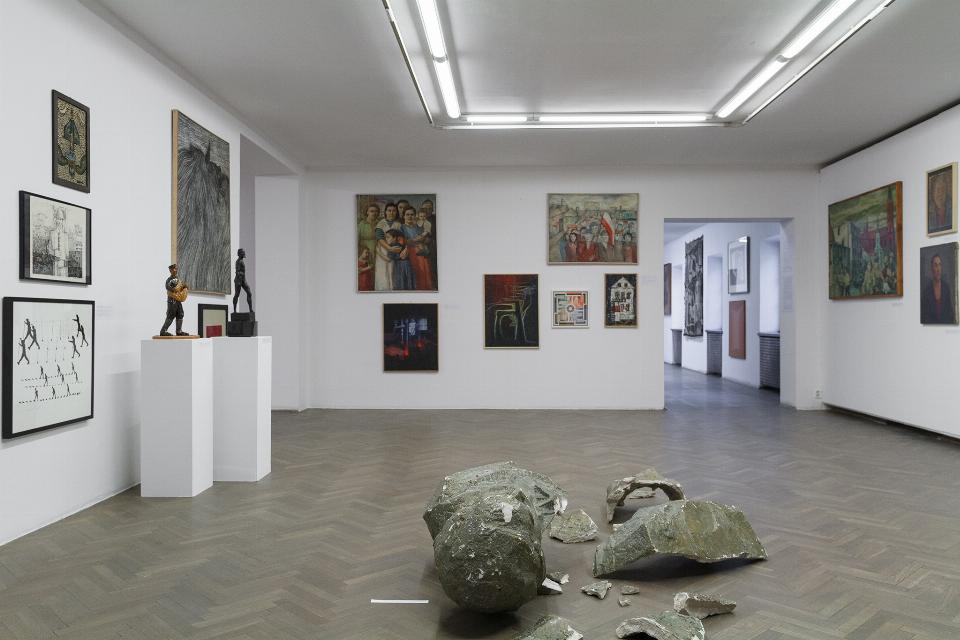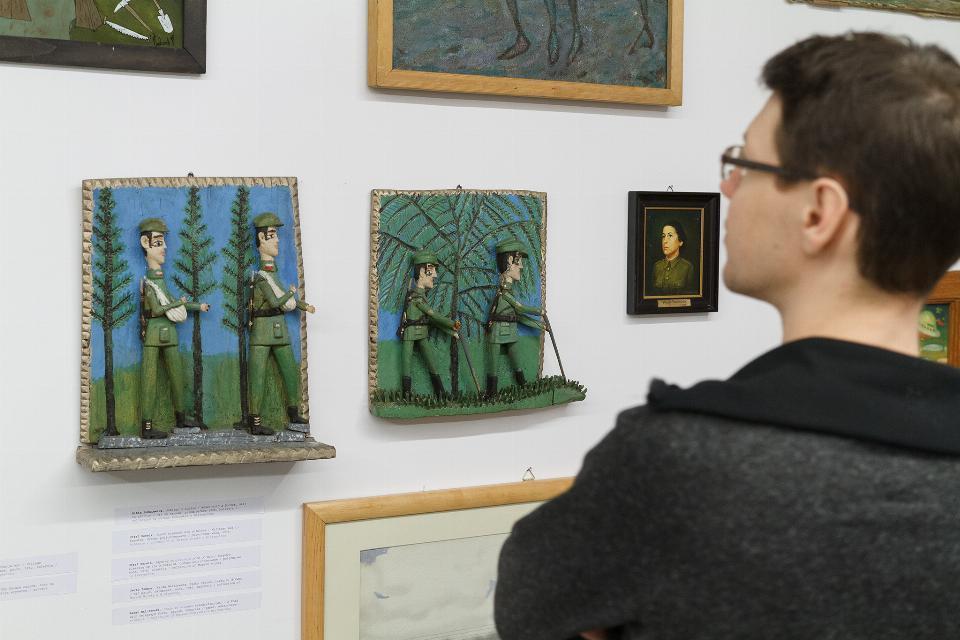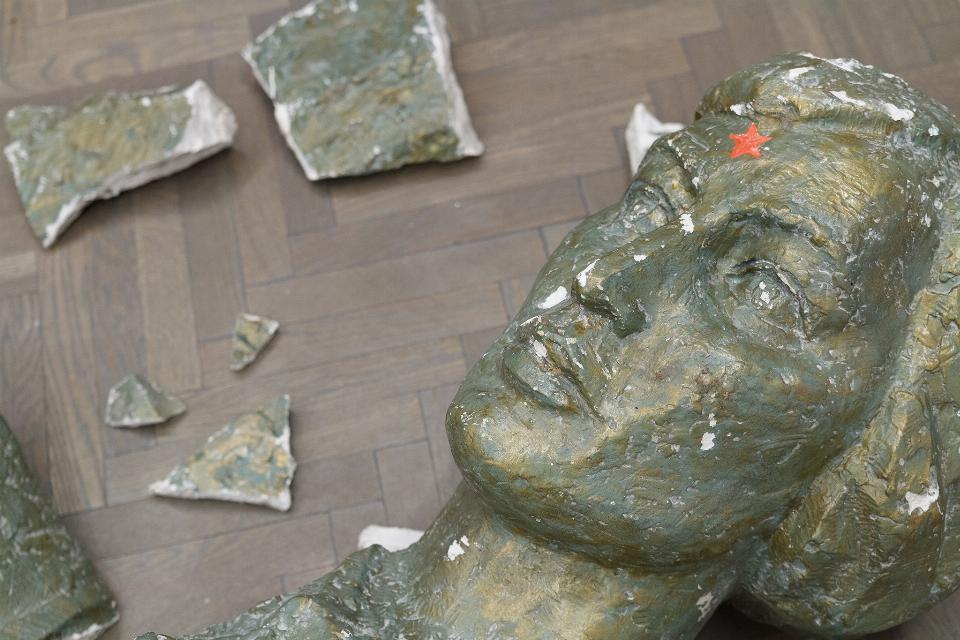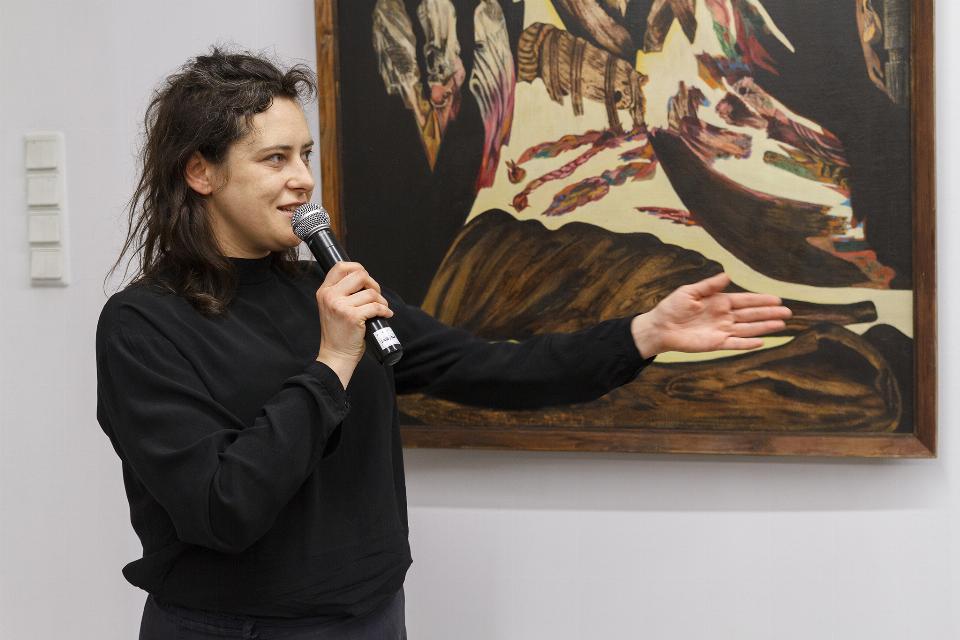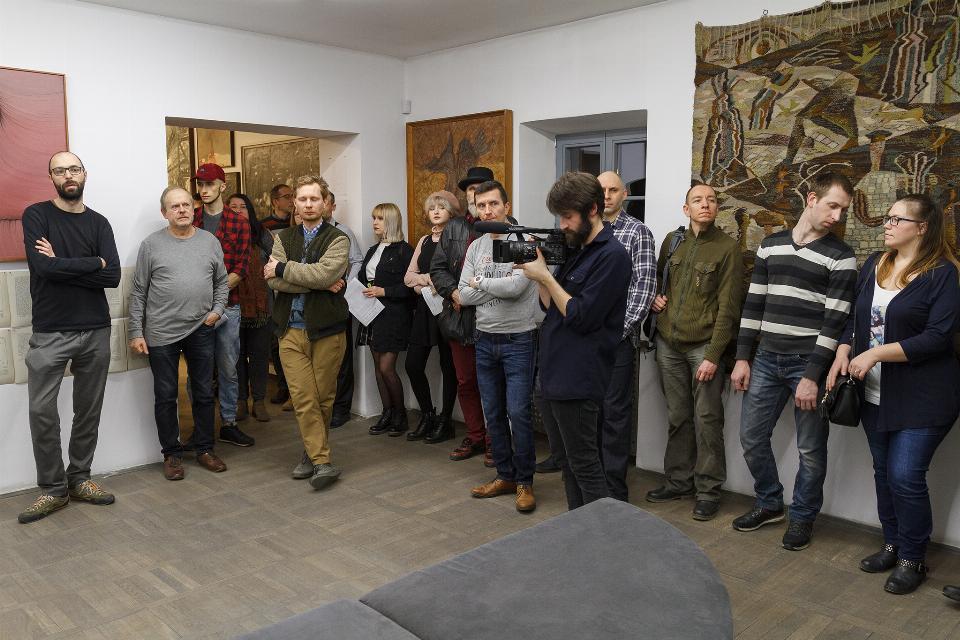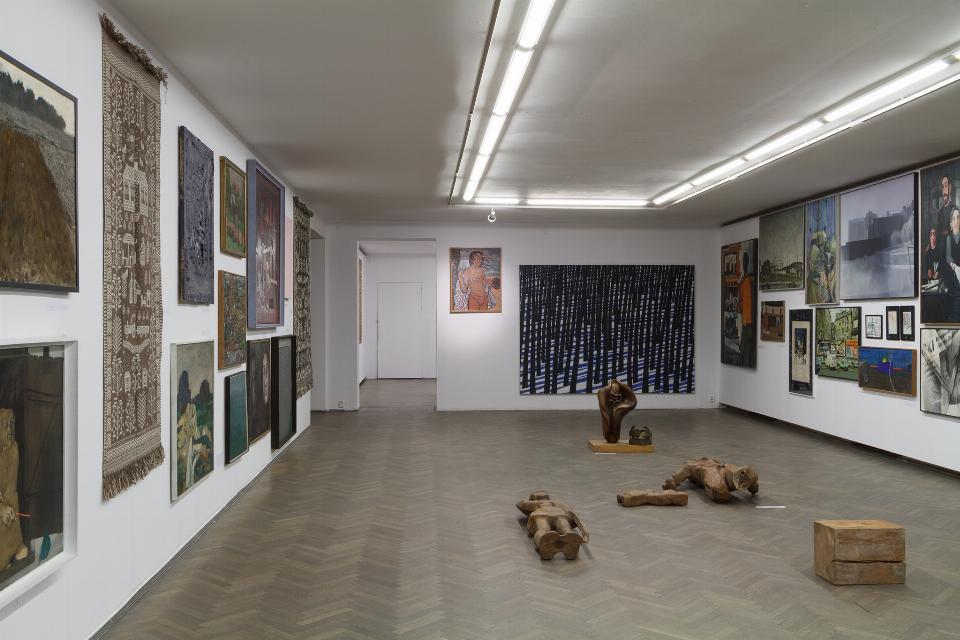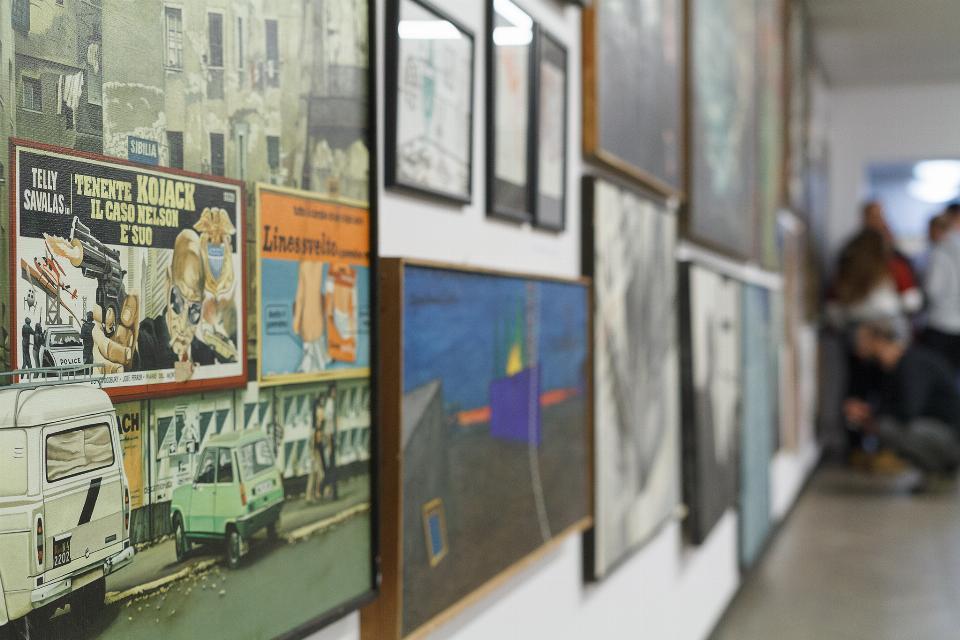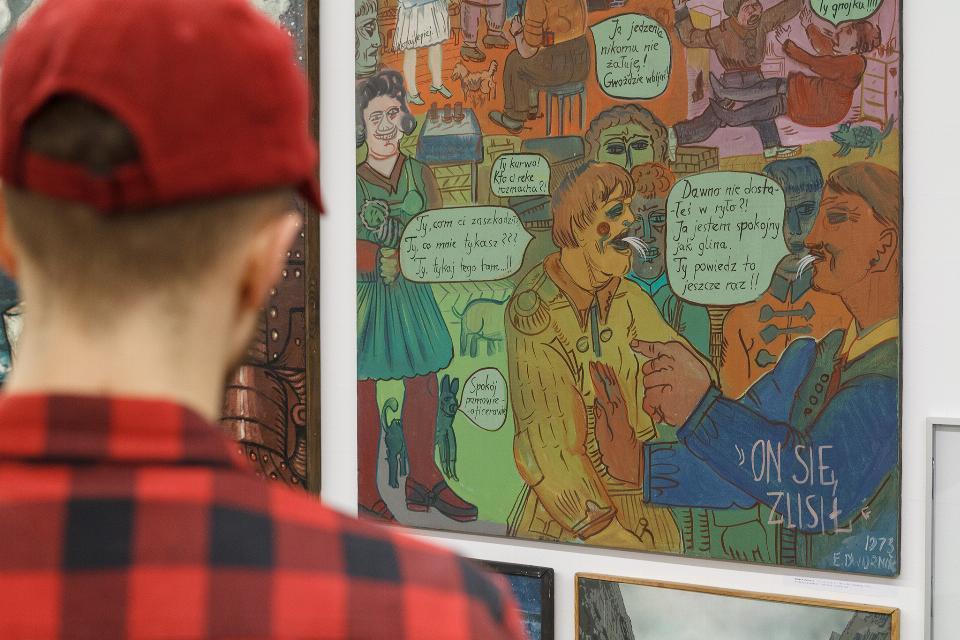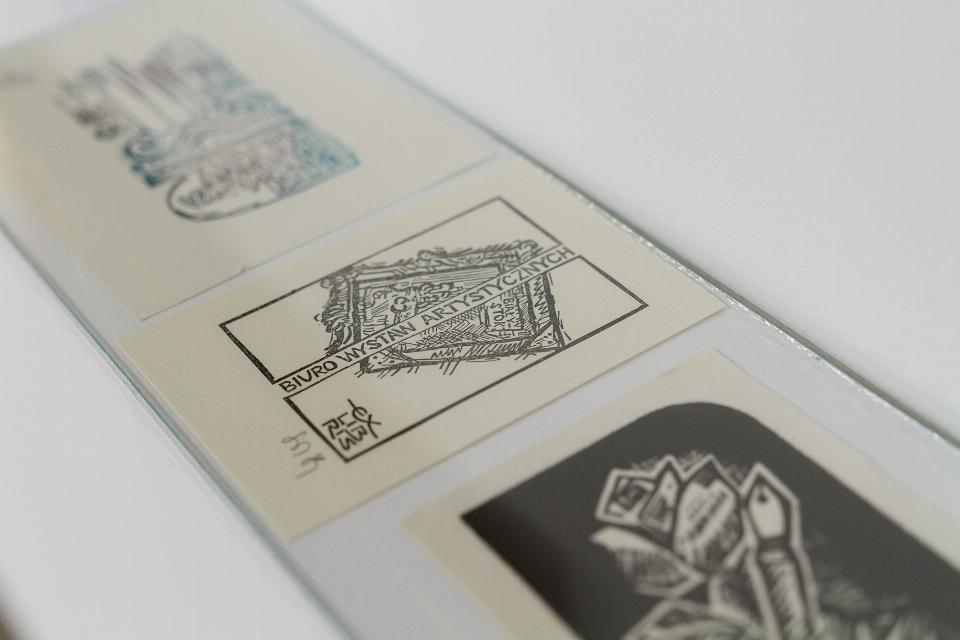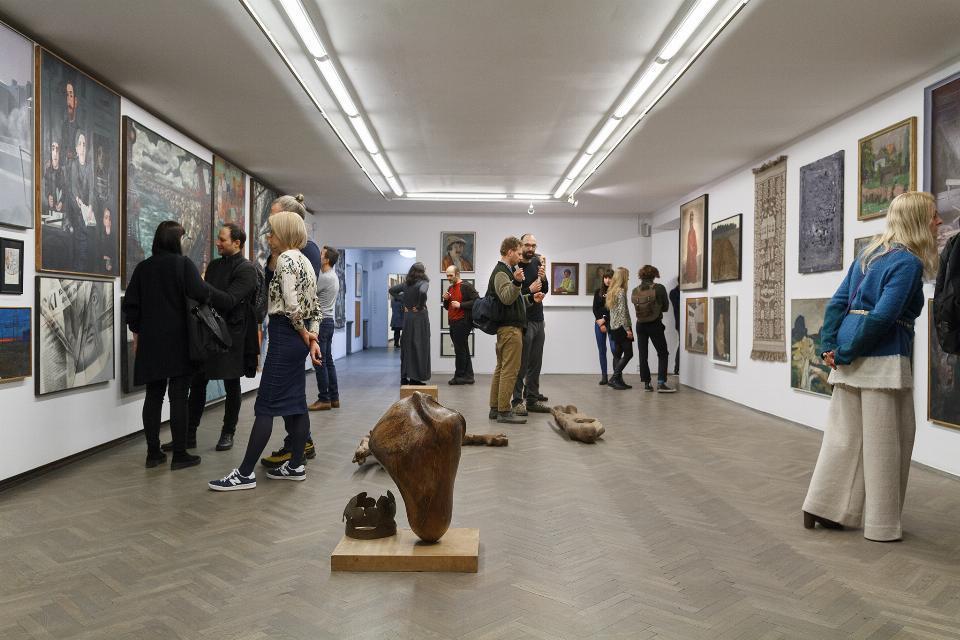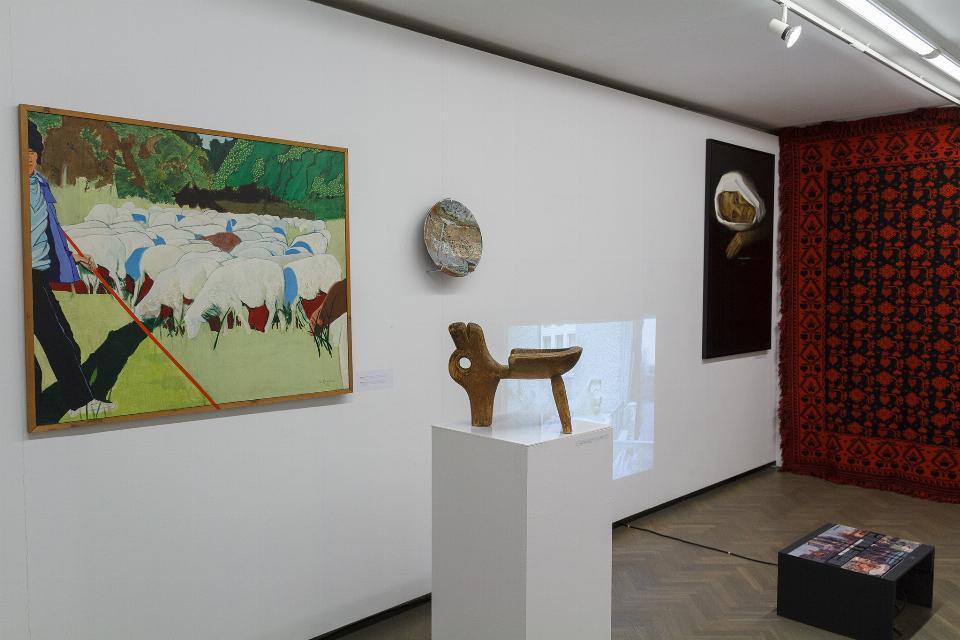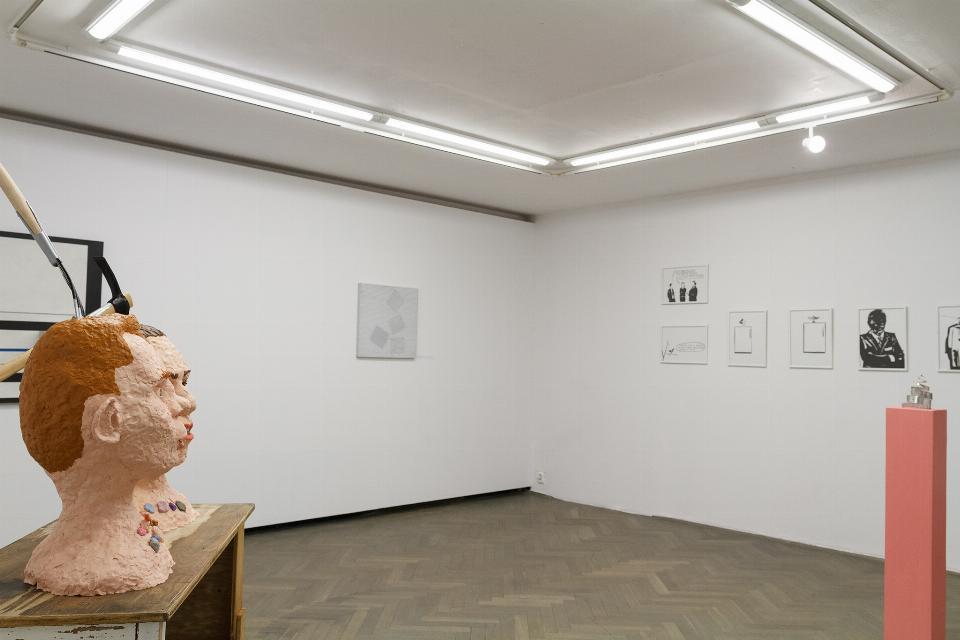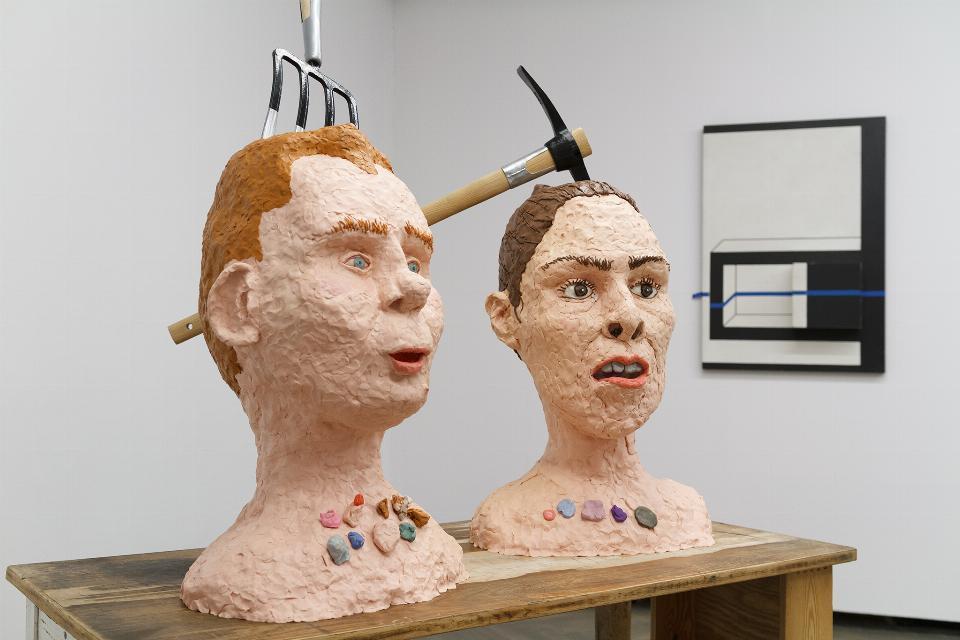Farmhands in Factories and Boas in Brasseries
„Farmhands in Factories and Boas in Brasseries” is an exhibition inspired by Andrzej Leder’s book entitled “Prześniona rewolucja” [The Slept-through Revolution] that analyzes social effects of the Agricultural Act of 1944.
Farmhands in Factories, Boas in Brasseries is a re-edition of an eponymous 2016 exhibition at the Museum of Modern Art in Warsaw which investigated centrally constructed instruments for upward social mobility on the example of an illustrated magazine for youth from extra-metropolitan localities, and the totalitarian regime’s uses of culture as an engine and a codifier of change in an individual’s social status. The current one takes a look at cultures—the indigenous one (with its vernacularity and organicality) and the academic one (the question of the common versus the national)—emerging from Podlasie: the most ethnically and culturally diverse region of pre-WWII Poland—in transition from the cyclical to the historical time. These are presented against the background of a country-wide—underground and regime—art in the light of state-ranging social changes instigated top-down as a result of the complete enfranchisement of peasants by the Agrarian Reform in 1944. The historical event has been singled out as a foundation for contemporary Polish society (with its class divisions and inequalities as well as its re-sentiments) in Andrzej Leder’s Prześniona rewolucja [The Slept-through Revolution] (2014), a ground-breaking publication for the debates on Polish history. The revolution (the Second World War and the Yalta Conference) ensured stability, social order and economic growth, but it released citizens from their responsibility for change and deprived them of an opportunity for an act of political subjectivisation.
The exhibition is constructed with a cubist method of compositional realism; it consists of four chrono-political stories: on the pre-war period, on the right-after-the-war, on the constitutive moment for the modern, bourgeois culture in Poland and its degradation, and on the present, after 1989. Each section repeats a history, but from a perspective of a different time period, be it the time of works’ creation, or the historical moment about which it speaks. Each section manifests fantasy structures in different plasticity. Each juxtaposes the realist (bourgeois realism, socialist realism, the 1960s formalisms, ‘soc art’ and ‘soc art dada’; etc. up to the contemporary explorations under the conditions of capitalist realism through the means of ‘occupational realism’), modernisation- and progress-oriented, with the romanticised, and often sentimental—as relating to a passing world. It invokes violence-related, often unconscious, ruptures and raptures, creatively ‘worked-through’ by artists. However, realism and realist art are understood—after György Lukács—as art which presents the audience with a possibility of identification. Exhibition interrogates not only the social origins of Poland and the melioratory processes forming contemporary populace, but also the responsibility of art and the artist for the people’s position in the challenging genealogy of Polish society, and ask the question how time operates in art.
Ewa Tatar
Related event:
10 March (Saturday), 11.00 – a curator-led exhibition tour
Cooperation from the gallery: Zbigniew Świdziński
Zuzanna Bartoszek, Dom Mody Limanka, Zuza Golińska, Tobiasz Jędrak, Agnieszka Kurant, Jan Moszumański, Tomasz Mróz, Dominika Olszowy, Witek Orski, Tomasz Pawłowski, Ewa Polska, Karol Radziszewski, Józef Robakowski, Adam Rzepecki, Wilhelm Sasnal, Jana Shostak, Mikołaj Sobczak, Ewa Zarzycka, Artur Żmijewski

PLAN YOUR VISIT
Opening times:
Thuesday – Sunday
10:00-18:00
Last admission
to exhibition is at:
17.30
